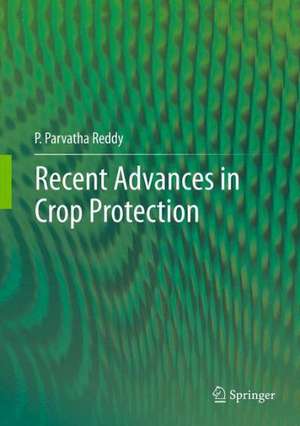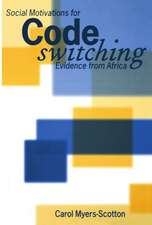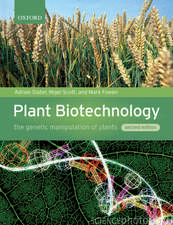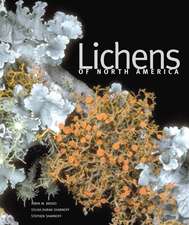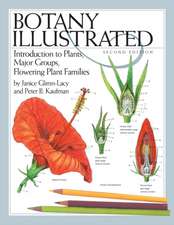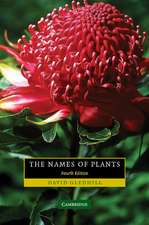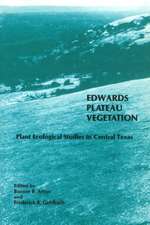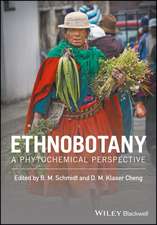Recent advances in crop protection
Autor P.Parvatha Reddyen Limba Engleză Hardback – 14 sep 2012
| Toate formatele și edițiile | Preț | Express |
|---|---|---|
| Paperback (1) | 788.07 lei 39-44 zile | |
| Springer India – 23 aug 2016 | 788.07 lei 39-44 zile | |
| Hardback (1) | 960.42 lei 6-8 săpt. | |
| Springer India – 14 sep 2012 | 960.42 lei 6-8 săpt. |
Preț: 960.42 lei
Preț vechi: 1171.25 lei
-18% Nou
Puncte Express: 1441
Preț estimativ în valută:
183.79€ • 189.89$ • 152.88£
183.79€ • 189.89$ • 152.88£
Carte tipărită la comandă
Livrare economică 20 martie-03 aprilie
Preluare comenzi: 021 569.72.76
Specificații
ISBN-13: 9788132207221
ISBN-10: 813220722X
Pagini: 350
Ilustrații: XIX, 268 p.
Dimensiuni: 178 x 254 x 25 mm
Greutate: 0.88 kg
Ediția:2013
Editura: Springer India
Colecția Springer
Locul publicării:New Delhi, India
ISBN-10: 813220722X
Pagini: 350
Ilustrații: XIX, 268 p.
Dimensiuni: 178 x 254 x 25 mm
Greutate: 0.88 kg
Ediția:2013
Editura: Springer India
Colecția Springer
Locul publicării:New Delhi, India
Public țintă
ResearchCuprins
Preface.- chapter 1. introduction.-chapter2. avermectins.-chapter3. bacteriophages.-chapter 4. biofumigation.-chapter 5. biotechnological approaches.-chapter6. bio-priming of seeds.- chapter 7. disguising the leaf surface.-chapter 8. non-pathogenic strains.- chapter 9. plant defense activators.-chapter 10. plant growth promoting rhizobacteria (pgpr).-chapter 11. soil solarization.-chapter 12. strobilurin fungicides.-chapter 13. variety mixtures/cultivar mixtures/multilines.-chapter 14. biointensive integrated pest management.- chapter 15. pathogenesis-related proteins (prs).-chapter16. other recent advances.-subject index.
Recenzii
From the reviews:
“Reddy (Indian Institute of Horticultural Research) offers an excellent analysis of advances in crop protection methodology. … The key feature of this work is that it provides invaluable information for readers from a cadre of disciplines, not an insignificant accomplishment. Summing Up: Highly recommended. Graduate students, researchers/faculty, and professionals/practitioners.” (R. Frederiksen, Choice, Vol. 50 (8), April, 2013)
“Reddy (Indian Institute of Horticultural Research) offers an excellent analysis of advances in crop protection methodology. … The key feature of this work is that it provides invaluable information for readers from a cadre of disciplines, not an insignificant accomplishment. Summing Up: Highly recommended. Graduate students, researchers/faculty, and professionals/practitioners.” (R. Frederiksen, Choice, Vol. 50 (8), April, 2013)
Notă biografică
Dr P Parvatha Reddy obtained his PhD degree in Plant Pathology jointly from the University of Florida, USA, and the University of Agricultural Sciences, Bangalore. He served as the Director of the prestigious Indian Institute of Horticultural Research (IIHR) at Bangalore from 1999 to 2002 during which period the Institute was honoured with “ICAR Best Institution Award”. He also served as the Head, Division of Entomology and Nematology at IIHR and gave tremendous impetus and direction to research, extension and education in developing bio-intensive integrated pest management strategies in horticultural crops. Dr. Reddy has about 34 years of experience working with horticultural crops and is involved in developing an F1 tomato hybrid “Arka Varadan” resistant to root-knot nematodes. He has over 237 scientific publications to his credit, which also include 22 books. Dr Reddy has been honoured with the following prestigious Awards: “Association for Advancement Pest Management in Horticultural Ecosystems Award”, “Dr. G.I. D’souza Memorial Lecture Award”, “Prof. H.M. Shah Memorial Award” and “ Hexamar Agricultural Research and Development Foundation Award” for his unstinted efforts in developing sustainable, bio-intensive and eco-friendly integrated pest management strategies in horticultural crops.
Textul de pe ultima copertă
In the recent years, the need to increase food production to meet the demands of rapidly increasing population from a limited land resource necessitated the use of intensive farming systems, with the inputs like narrow genetic base, high dose of fertilizers, pesticides, irrigation, monocropping, etc. which led to the development of diseases and pest. The effect of changing global climate, particularly the sharp increase in CO2 concentration, has increased the susceptibility of plants to pathogens and pests. Because of the chemicalization of agriculture, the age-old eco-friendly pest management practices like sanitation, crop rotation, mixed cropping, adjustment of date of planting, fallowing, summer ploughing, green manuring, composting, etc. are not being practiced, affecting the crops adversely. This has encouraged researchers to look for eco-friendly and novel approaches for pest management.
The information on recent advances in crop protection (involvingbacteria, fungi, nematodes, insects, mites and weeds) is scattered. The book delves upon the most latest developments in crop protection such as avermectins, bacteriophages, biofumigation, biotechnological approaches; bio-priming of seeds; disguising the leaf surface; use of non-pathogenic strains, plant defense activators, plant growth promoting rhizobacteria, pathogenesis-related proteins, strobilurin fungicides, RNA interference, and variety of mixtures/cultivar mixtures/multilines; soil solarization; biointensive integrated pest management; among several others (fusion protein-based biopesticides, seed mat technology and environmental methods). This book is a ready reference for students, policy-makers, scientists, researchers and extension workers.
The information on recent advances in crop protection (involvingbacteria, fungi, nematodes, insects, mites and weeds) is scattered. The book delves upon the most latest developments in crop protection such as avermectins, bacteriophages, biofumigation, biotechnological approaches; bio-priming of seeds; disguising the leaf surface; use of non-pathogenic strains, plant defense activators, plant growth promoting rhizobacteria, pathogenesis-related proteins, strobilurin fungicides, RNA interference, and variety of mixtures/cultivar mixtures/multilines; soil solarization; biointensive integrated pest management; among several others (fusion protein-based biopesticides, seed mat technology and environmental methods). This book is a ready reference for students, policy-makers, scientists, researchers and extension workers.
Caracteristici
All recent developments and novel concepts in the field of crop protection are discussed in the book The book is a useful reference material for a wide gamut of readers, from policy-makers, researchers, extension workers to students The book is relevant in the current scenario, where globally the crops are often destroyed due to pest attacks The text is supported by self-explanatory illustrations and the language is reader-friendly for easy grasp and understanding
